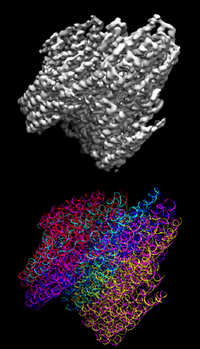
Photo from wikipedia
Most origamis are composed of triangular and quadrilateral facets. Since creases are practically straight, facets can be modelled as 3-node triangles (T3) and 4-node quadrilaterals (Q4) with translational nodal dofs… Click to show full abstract
Most origamis are composed of triangular and quadrilateral facets. Since creases are practically straight, facets can be modelled as 3-node triangles (T3) and 4-node quadrilaterals (Q4) with translational nodal dofs only. While bending is not possible in T3, a corotational consideration is employed to quantify the bending deformation in Q4 under large displacement/rotation but small strain/curvature. The pertinent tangential stiffness matrix turns out to be a simple constant matrix. Meanwhile, the fold angle of the crease is computed by the dot product of two vectors connecting the crease and nodes defining the adjacent facets. Derivatives of the fold angle are considerably simplified by invoking the small strain/curvature behaviour of the facet. To manoeuver the origami from its initial to final configuration, rest angles defining the zero energy states of the creases are changed to their target values incrementally. The proposed methods of quantifying the bending deformation in Q4 and the derivative of the fold angle are implemented in a commercial software using two user-defined element subroutines. They together with the built-in 3D membrane elements realize the simulation and analysis of origami in a finite element environment. Furthermore, the element for modelling the crease is equally applicable to modelling spring-loaded hinges.
Journal Title: International Journal of Mechanics and Materials in Design
Year Published: 2021
Link to full text (if available)
Share on Social Media: Sign Up to like & get
recommendations!